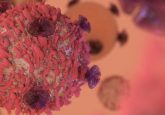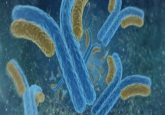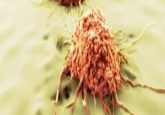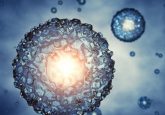Ask the Experts: how is CAR-T revolutionizing oncology? (Part II: potential in solid tumors and future outlook)
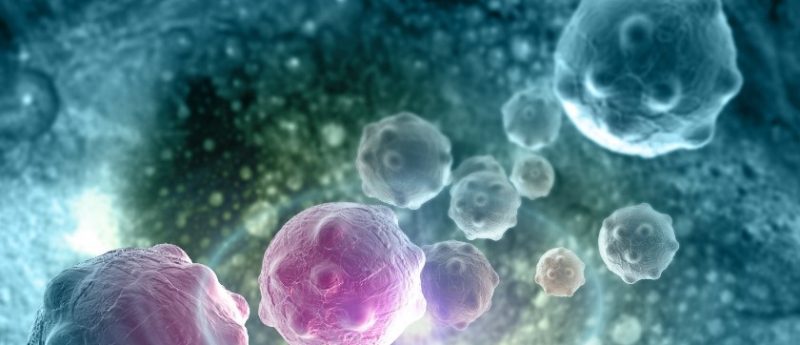
In our two part ‘Ask the Experts’ series, we shine a light on CAR-T cell therapy; providing perspectives from a panel that includes both researchers in the field and a patient who underwent this treatment modality. What are the biggest challenges surrounding the production of CAR-T cells? What was it like receiving CAR-T cell therapy? Where will CAR-T cell therapy be in the next 5 years? With CAR-T cell therapy becoming a rapidly emerging platform for cancer treatment, our experts will address these questions and more.
Bringing together insights from a patients experience to research and clinical perspectives, our experts are Robyn Stacy-Humphries MD (Carolina Healthcare System University Medical Center, NC, USA), Prasad Adusumilli MD (Memorial Sloan Kettering Centre, NY, USA) and Bruce Levine MD (University of Pennsylvania, PA, USA). You can read the second instalment of this discussion below, which delves into the potential of CAR-T cell therapy for solid tumors and what the future holds for this type of treatment. Part I can be found here.
What is the potential of this therapy in solid tumors?
I believe that we will see even more successes in solid tumor CAR-T cell therapies that are based on a strong foundation of tumor immunology.
Prasad Adusumilli: Research and knowledge gained from both CAR-T cell therapy for hematological malignancies and checkpoint blockade therapy for solid tumors provides an ideal background and timing for solid tumor CAR-T cell therapies to succeed. I believe that we will see even more successes in solid tumor CAR-T cell therapies that are based on a strong foundation of tumor immunology. Combination immunotherapy holds promise as we start to see partial successes with single agent therapy. Ultimately, by tilting the balance within the tumor microenvironment from immuno suppression to effector responses, the patient’s own immune responses will now have a chance to sustain anti-tumor efficacy.
Bruce Levine: Solid tumors pose challenges for a number of reasons. The first is in targets that are both clean and comprehensive. What that means is that there are a number of solid tumor targets that are expressed brightly on solid tumors, but often dimly expressed on other tissues. There are also targets like EGFRviii in glioblastoma that are unique to tumor, but not expressed on 100% of the tumor cells. Thus, we need both multiple targets, and mechanisms to distinguish between tumor and healthy tissue targeting, such as affinity tuning or conditional and modular targeting and activation. The second challenge in solid tumors is that they tend to be much more immunosuppressive than liquid tumors like leukemias. The solution here could be to combine CAR cells with a course of checkpoint blocking antibody therapy, to knock out the checkpoint receptor PD1, for example, or the engineer resistance to other immunosuppressive mechanisms such as tumor secretion of TGF-beta. Another challenge is simply geometry and access. Solid tumors are not as accessible from every angle as is the case for liquid tumors in single cell suspension in the blood and bone marrow. There is evidence that direct injection of CAR-T cells may be an option to enhance activity in solid tumors. Combining advancements in these areas, we are optimistic that we will see more solid tumor products progressing through the pipelines.
What are the potential mechanisms of action that are driving resistance to CAR-T cell therapy?
BL: One mechanism of action of resistance, tumor induced immune suppression is discussed above. This suppression may or may not result in disappearance of CAR cells shortly after infusion. In some cases, CAR-T cells have “woken up” after the administration of checkpoint blocking antibody. We don’t fully understand why CAR T cells from some patients expand well in vivo and persist long term. We do know that the peak of expansion and the area under the curve for engraftment correlates with clinical response. In some of our clinical trials, we have designed in the ability to infuse a supplemental dose of CAR-T cells if engraftment is on the short end. We also know that a certain phenotype of T cell subsets called central memory and stem cell memory correlate with engraftment and there are attempts to isolate these cells and encourage their expansion during manufacturing. Another mechanism of resistance is the emergence or development of antigen negative tumor. The solution to this possibility is to have another CAR in the garage. Already, we see CD19+CD22 and CD19+BCMA CAR clinical trials are treating patients. Look for more of these in the near future.
Could you let us know your thoughts on the cost vs value of CAR T-cell therapy?
Robyn Stacey-Humphries: CAR-T is a modern medical miracle. I wish I could have had this therapy first instead of the multiple chemotherapies I endured. Although the price tag is higher than many standard therapies, CAR-T usual allows patients to return to a normal life rather quickly versus multiple treatments. Chemotherapy and head and neck radiation were not only physically challenging but also demoralizing with the hair loss and extreme weight loss. All of my significant long-term side effects—hypothyroidism, chronic dry mouth, scars, dry eyes, osteoporosis —are from chemotherapy or radiation. I do have chronic immunodeficiency from the CAR-T but that is slowly improving and is asymptomatic for me. The standard therapy for relapsed lymphoma is an allogeneic transplant which has an average price tag of $800,000 (US) [1]. With this therapy, many patients die during treatment and many more have severe co-morbidities secondary to graft versus host disease. It is unusual to be able to return to work within a year after these transplants-possible never. Thus, the cost to society is higher with allogenic transplant as opposed to CAR-T; additionally, allogenic transplant is miserable for most patients. Both treatments have a similar success rate.
Where do you see the field progressing in the next 5 years?
RH: I hope that most, perhaps all cancers will be treated and cured with less toxic methods using immunotherapy and genetic therapy. In the future, I hope that many different CAR-T products for blood cancers as well as solid tumors may an off the shelf therapy provided by universal donors.
PA: Improved understanding of the tumor immune modulation will help advance therapies in the next 5 years. With advances in single-cell assays as well as single-cell genetic engineering, we will be able to accomplish multiple effects by use of a single cell. As we get comfortable with avoidance or management of toxicities, the outcomes can further be enhanced using multiple cells at the same time.
My greatest hope is for wider access to these therapies for patients. I expect that there will be more regulatory agency approvals around the world, more products approved, potentially in myeloma first and then in other cancers.
BL: My greatest hope is for wider access to these therapies for patients. I expect that there will be more regulatory agency approvals around the world, more products approved, potentially in myeloma first and then in other cancers. I also hope that we will see manufacturing, analytics, and logistics improvements that lead to lower cost of goods and services and thereby lower prices on these therapies. An area of concern is the ethical use of cell and gene therapies. We have seen for the past several years the emergence of stem cell clinics that avoid regulatory oversight and sell direct to consumer a false promise of therapies for everything from Alzheimer’s to Autism. We have also seen the technical disaster and horrendously immoral renegade use of gene editing in human embryos. We must be prepared to defend ethical use of gene therapies and further development. We must also be prepared to defend the integrity of the field by educating patients and the public at large to be able to distinguish between scientifically validated and monitored therapies and those that are unproven and unethical. For young professionals and students, there is much to learn and consider and the future is bright. Take immunology classes and enrol in graduate programs in cell and gene therapies. Join professional societies, such as the International Society for Cell and Gene Therapy – full disclosure, I am President-Elect. The field needs you!
Looking to the future, how do you think we can improve care for cancer patients?
RH: I think care for cancer patients will be improved as we continue to develop immunotherapies and genetic therapies, so that each patients treatment will be truly patient centred. With increasing cancer survival rates, the development of survivorship programs is essential to help patients return to a good quality of life. Treatment for cancer is emotionally and physically challenging. Luckily, I think more centers are addressing these issues.
Prasad S. Adusumilli
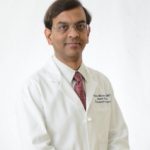
Deputy Chief and Attending, Thoracic Surgery, MD, FACS, FCCP
Head, Solid Tumors Cell Therapy, Cellular Therapeutics Center
Director, Mesothelioma Program
Memorial Sloan-Kettering Cancer Center (NY, USA).
My research focuses on tumor immunology, chimeric antigen receptor CAR-T cell therapy, and combination immunotherapy for thoracic cancers. Over the years, we have developed clinically-relevant mouse models and modeled biological therapies in these models. This research has yielded mechanistic data that has been translated and is now in CAR-T cell and combination immunotherapy clinical trials for patients with lung cancer, pleural mesothelioma, and breast cancer. Our ongoing research focuses on investigating immuno-oncology agents’ efficacy in human ex vivo translational culture systems.
Our laboratory research has been funded by federal agencies and foundations resulting in >60 grant awards to date totaling >$30MM over the past decade. My research has progressed to clinical trials and >200 publications including in Cancer Discov, FASEB, J Clin Invest, J Clin Oncol, J Natl Cancer Inst, Nat Med, and Sci Transl Med. In addition to serving on medical journal editorial boards, I am the Deputy Editor for Molecular Therapy Oncolytics. I serve as a member of national peer-review committees including NCI, DoD, PCORI, National Health Institutions of Austria, Belgium, Ireland, Italy, Poland, Netherlands, Switzerland and the United Kingdom. I am a member of the Fleischner Society and American Society of Clinical Investigation. I serve on international committees
including the American Society of Cell and Gene Therapy, NCI thoracic cancers steering committee, International Association for the Study of Lung Cancer, and the American Association for Thoracic Surgery. In my laboratory, I mentor MDs, MD/PhDs, and PhDs in thoracic oncology research, including visiting scholars from international institutions.
Bruce Levine

B.A. (Major-Biology, Minor-History)
The University of Pennsylvania , 1984.
Ph.D. (Immunology and Infectious Diseases)
The Johns Hopkins University, 1992.
Bruce Levine, Barbara and Edward Netter Professor in Cancer Gene Therapy, is the Founding Director of the Clinical Cell and Vaccine Production Facility (CVPF) in the Department of Pathology and Laboratory Medicine and the Abramson Cancer Center, Perelman School of Medicine, University of Pennsylvania (PA, USA). He received a B.A. (Biology) from Penn and a Ph.D. in Immunology and Infectious Diseases from Johns Hopkins (MD, USA). First-in-human adoptive immunotherapy trials include the first use of a lentiviral vector, the first infusions of gene-edited cells, and the first use of lentivirally-modified cells to treat cancer. Levine has overseen the production, testing and release of 3000 cellular products administered to >1200 patients in clinical trials since 1996. T lymphocytes from HIV+ subjects have been rendered resistant to HIV infection and reinfused. T lymphocytes from cancer patients have been redirected with chimeric antigen receptors (CAR’s) to hunt and destroy their malignancies. This therapy, developed by the CVPF and licensed by Novartis, recently became the first FDA approved gene therapy (Kymriah). Levine is co-inventor on 23 issued US patents and co-author of 140 publications with a Google Scholar citation h-index of 72. He is a Co-
Founder of Tmunity Therapeutics, a spinout of the University of Pennsylvania. He has been interviewed by the NY Times, Wall Street Journal, Time Magazine, National Geographic, Forbes, BBC, and other international media outlets.
Robyn Stacy-Humphries
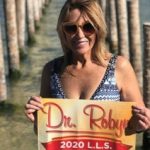
Robyn Stacy-Humphries, MD is a radiologist with Charlotte Radiology, Atrium Health Care System (NC, USA) – body imaging, mammography and nuclear medicine. BS – Wake Forest University , MD – University of NC at Chapel Hill. Residency and Fellowship- Georgetown University Hospital. In remission from DLBCL after Novartis Phase II Juliet clinical trial of CD -19 CAR-T. Follow on Instagram: drrobynforlls.woty2020
Related content
US Medicare coverage proposed for CAR-T cancer therapies
NICE approves CAR-T therapy Kymriah® for diffuse large B-cell lymphoma in adults
Protected: Unlocking the power of the cancer genome: an interview with Phil Febbo
